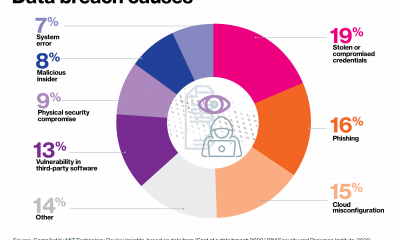The doctors and dentists Americans count on are still fuelling the opioid crisis. Big pharma pushes addictive drugs, and our healthcare system is more than happy to pay for them. We won’t win this battle by dishing out more prescriptions. Instead, we have to fundamentally reframe the way we view pain and addiction.
Pain is personal. That’s why a one-size-fits-all approach never works, especially when that solution is brutally addictive. We’ve tackled this problem in the wrong ways for a long time. That’s why we must insist on a new era of self-guided, non-opioid pain relief.
The opioid figures paint a bleak picture. In the US, the number of people dying from opioid overdose increased by 120% between 2010 and 2018. The pandemic has made it far worse, with 75,673 Americans dying from an opioid overdose in the 12-month period ending in April 2021, up from 56,064 the year before. The tragic reality of this epidemic is that it’s a self-inflicted wound.
In the 1990s, Purdue Pharma launched OxyContin® and marketed it as a safe and effective way to treat pain. Pharmaceutical companies launched aggressive promotion and marketing campaigns, pushing the idea that physicians undermanaged pain and worried too much about addiction.
Since then, between 40 and 80% of opioid use disorder (OUD) has been attributed to initial medical use for pain. Unlike other drug crises, 80% of OUD starts with a pill prescribed by a physician or dentist.
Now, we know better. We know that 10-15% of people are susceptible to addictive highs beyond pain relief due to genetic metabolism speed. In fact, in one study of 15,000 young people, 5.8% of young adults who got opioids for wisdom tooth removal were addicted within a year, compared to 0.4% who did not. That’s over 1 in 20 new opioid users, for a commonplace procedure that typically hurts for 2 days.
Most importantly, we know that for most outpatient injuries and surgeries, opioids are inferior to over-the-counter care. We also know that both psychosocial and genetic factors trigger the persistent use of opioids after healing.
Poet, memoirist, and civil rights activist Maya Angelou famously prescribed, “do the best you can until you know better. Then, when you know better, do better.” We didn’t know then, but we certainly do know now. As physicians, our first duty is to do no harm.
But the call to action extends far beyond the re-education of healthcare providers across America. The opioid crisis in the United States requires us to rethink the way we manage pain across our entire healthcare system.
As the first port of call, for acute pain, we need to get everyone below 3 days of home opioid use. For minor pain, we need to give people pain relief options to avoid opioids altogether.
We already have credible, highly effective pain solutions that give patients power over their pain, without exposing them to the risk of addiction. For example, it turns out that readily-accessible options like pressure, stretching, motion, and touch all inhibit pain strongly in the spine. Cold and magnesium supplements each reduce pain by up to 30%. A recent pilot of a cold/mechanical stimulation device after knee surgery reduced opioid use by 35%. A 2013 mastectomy study found magnesium reduced oral opioids from 30mg opioid equivalents to 10mg.
But neither M-stim devices nor magnesium are covered by insurance. Few doctors even know to tell patients about these options at all.
Our pharma-focus fuels our addiction crisis. Pain is personal, complicated, and best treated with patient-directed, multi-option plans. Pills should be a short-term option, but not the first solution for pain. A balanced model is the safest and most effective way to treat pain. To make that work, Americans need coverage for pain relief, not just pain pills.
Ultimately it is patients who understand their pain the most. That’s why we need to require non-pharmacological recommendations with every prescription. Health plans should cover pain relief devices, office education, pill-sparing strategies, and even give patients a budget for pain services and products.
Our healthcare system is set up to reimburse and pay for drugs the moment they tip the statistical significance scales, but not to pay for much less expensive, holistic options. And we’ve come to accept this one-size-fits-all solution that’s anything but a solution. For those 75,653 Americans in 12 months, it’s a death sentence.
If we want to start saving lives, all stakeholders, from physicians to health insurers and policymakers, are going to have to work in unison to redraw the pain management policy map. The NOPAIN act by Senator Moore-Capito would pay for proven opioid-sparing devices. It’s a good start, but doesn’t go far enough with our understanding of the power of options, and allowing patients to pick pain prevention.
There is a growing priority to understand and prevent new addiction. Unfortunately, our healthcare system and pharma lobbyists drag this process down by keeping the focus on opioid rehabilitation medications and alternative drug therapies. Prescribing is still an easy habit, and pills cost patients so much less – but cost society so much more.
(Amy Baxter is a pain relief scientist, and inventor and founder of Pain Care Labs)















